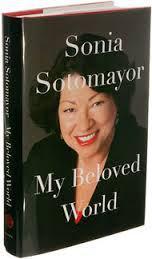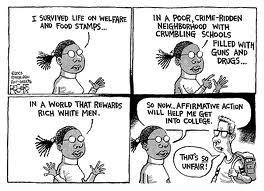 My wife gave me Sonia Sotomayor’s memoir as a Valentine gift – with a catch. I had to read it on her e-reader, which she wanted me to try. Verdict: I like its ease of use, but might quibble about inability to scribble.
My wife gave me Sonia Sotomayor’s memoir as a Valentine gift – with a catch. I had to read it on her e-reader, which she wanted me to try. Verdict: I like its ease of use, but might quibble about inability to scribble.
I had expressed interest in Sotomayor’s book after hearing some interviews. But actually, she had me at the title: My Beloved World. Though not everything in her world or mine is beautiful, I share the sensibility of that title.
One small criticism. Sotomayor relates at length how, in a high school speech, she focused on the famous 1964 Kitty Genovese case. The story was that Genovese’s brutal murder was watched by 38 witnesses, who did nothing; and ever since this has been a staple of societal critiques. Turns out the story just isn’t true; it was bad press reporting. Apparently Sotomayor is unaware of that.
While studying at Princeton, Sotomayor joined an Hispanic political action group. An issue arose concerning a local hospital where treatment of Spanish-speaking patients often suffered because of a language barrier. But instead of denouncing the hospital, picketing, etc., Sotomayor helped organize a program for bilingual volunteers to assist with Latino patients, which proved highly successful. I liked that story.

Sotomayor’s book gives this only a few lines, but I thought it was pretty stunning. As a college student, she basically invented, for herself, what came to be called word-processing; hers was the first Princeton thesis ever done that way.

Which leads me to my main point. Sotomayor was smart, and did a lot right in pursuing her ambitions, but also was a beneficiary of affirmative action, and she knew that. It’s doubtful she’d have gotten into Princeton had her name been Smith.
I oppose affirmative action, insofar as it’s ethnically based. For one thing, the whole concept of “race” is largely a societal construct and deeply flawed from an objective standpoint. (We have a president who’s more literally “African-American” than most who wear that label, yet his mom was a white Kansan.) Secondly, non-white skin doesn’t necessarily correlate with being disadvantaged in today’s America. And as for all the “diversity” platitudes, I might be more persuaded were academia not rife with “speech codes” and other enforcements of political correctness, suppressing the kind of diversity that really matters most on campus: diversity of thought and opinion.
But Sonia Sotomayor’s case shows how affirmative action – if you must call it that – should operate. Basing college admissions or hiring, etc., strictly on grades and/or test scores is wrong because they reveal only part of what’s important about a person and are actually poor predictors of general success. (See my post on The Marshmallow Test.)

Cartoon by Rogers, Pittsburgh Post-Gazette
Now, Sonia Sotomayor was not a textbook case of rising from disadvantage; though she was a Puerto Rican kid from Bronx’s “projects,” with an alcoholic father, her mother was a health care professional and she got a decent education in Catholic schools. But still, coming from that general environment, her path was not easy, and getting herself to where Princeton was even possible shows a panoply of personal characteristics that surely should count for more than mere test scores or grades. That Princeton chose her, over some other kids with higher numbers but born to privilege, was entirely justified. Indeed, that was a merit-based decision, not mere ethnicity-based affirmative action. Proper affirmative action should mean giving due weight to the achievement of people who didn’t have life handed to them on a platter but had to overcome disadvantages to get as far they have. Those are the people society should invest in, and we’re a better society for doing so, not only for those individual beneficiaries, but for everyone.
Unfortunately, this we are not doing. A person like Sotomayor even applying to a school like Princeton is actually unusual. A recent nationwide survey shows that only 34% of high-achieving high schoolers, in the lower income quartile, go to one of the 238 most selective colleges. For those in the higher income quartile, it’s 78%. The lower income group tends to be unaware of opportunities at elite colleges and to go, if at all, to local schools, with fewer resources, lower graduation rates, and – perversely – higher cost, because top colleges would likely offer them generous financial aid. Obviously this stunts their career potential.
Thus we are throwing away a lot of talent.

Later, when Sotomayor was at Yale Law School and interviewing for jobs, a law firm partner openly voiced a surmise that she‘d gotten into Yale because she was Puerto Rican. She replied that being Puerto Rican hadn’t hurt; but that graduating Princeton Phi Beta Kappa and Summa Cum Laude hadn’t hurt either. (But Sotomayor wryly notes the irony that when first apprised of these accolades, she was ignorant of their meaning and had to look them up!)
